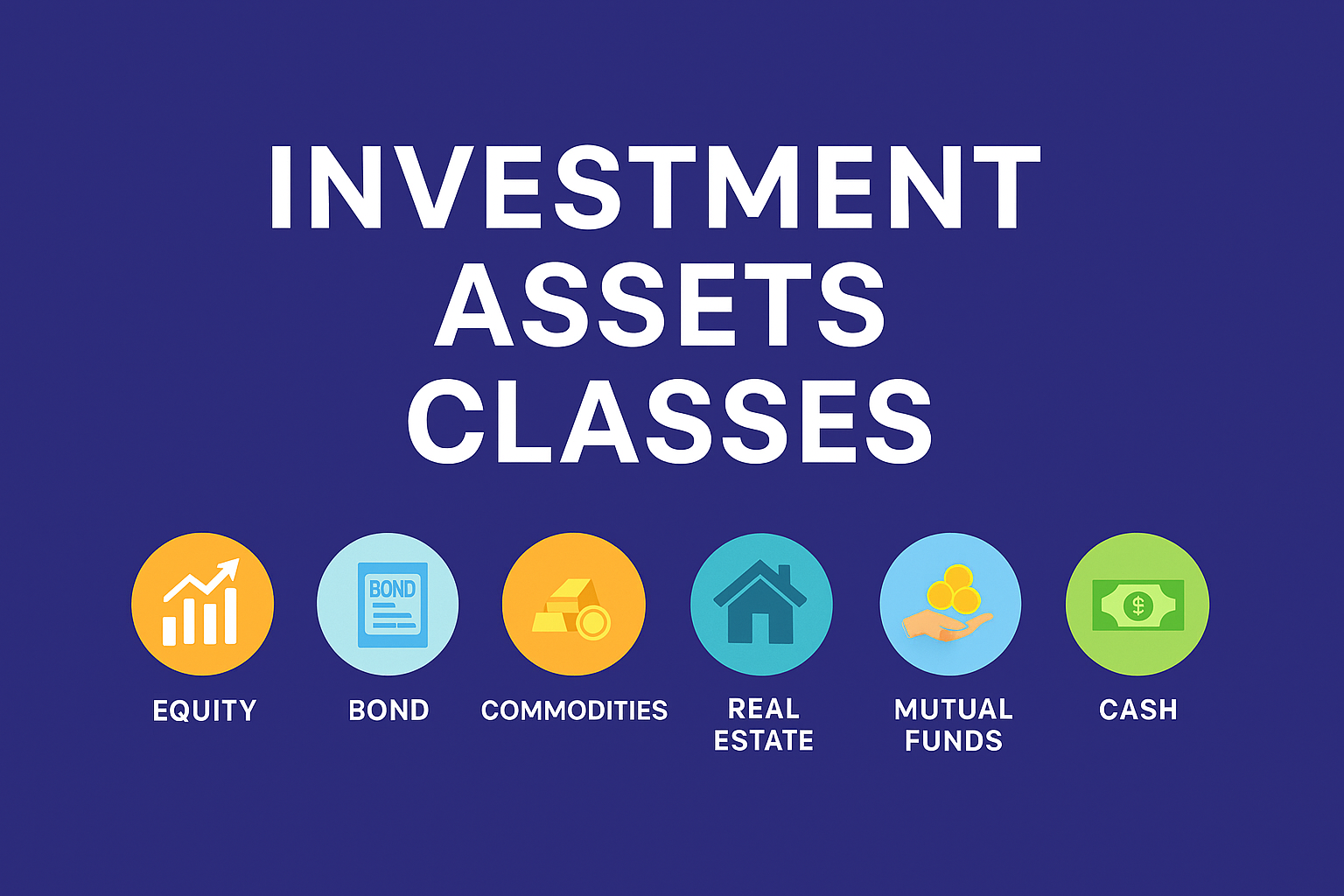Before we explore asset classes, it is important to first understand what assets are and why they matter in investment planning.
What are Assets?
An asset is any resource—either tangible (physical) or intangible—that has economic value and can provide current or future benefits to its owner. Assets are owned or controlled by an individual or an enterprise, hold monetary value, and can generate revenue or be converted into cash.
Examples of Assets:
-
A house that generates rental income for the investor.
-
Shares in a company that provide dividends, bonus shares, and potential appreciation in value over time.
Assets can be actively income-generating or may provide future economic benefits through appreciation in value.
What are Asset Classes?
An asset class is a group of investment instruments that share similar characteristics, follow the same regulatory framework, and tend to behave in similar ways in the marketplace. Grouping investments into asset classes helps investors diversify and manage risk effectively.
There are four broad asset classes: Real Estate, Commodities, Equities, and Fixed Income.
Major Asset Classes
Real Estate
Real estate is one of the most recognised and popular investment asset classes. It includes:
-
Residential property (houses, apartments)
-
Land
-
Commercial property (offices, shops)
Real estate investments can generate regular income through rent and long-term capital appreciation. Additionally, they often act as a hedge against inflation, making them attractive for long-term investors.
Commodities
Commodities are physical goods that can be traded and have standardized quality. They are widely used in daily life, such as:
-
Perishable commodities: food grains, spices
-
Non-perishable commodities: gold, silver, steel
Most individual investors focus on precious metals like gold and silver due to their global price visibility and perceived safe-haven status. Commodity investments generally generate returns through capital gains rather than regular income.
Equity
Equity represents ownership in a company. When you purchase shares, you become a part-owner of that business and share proportionate risks and returns based on your holdings.
Investing in equities offers:
-
Dividends (periodic income)
-
Bonus shares
-
Capital appreciation over time
Equities are considered high-risk compared to other asset classes, but historically, stock markets have delivered the highest returns over long investment periods.
Fixed Income
Fixed income investments involve lending money to a borrower for a fixed period at a fixed interest rate. Examples include:
-
Fixed deposits
-
Bonds
-
Debentures
Investors earn regular interest payments and receive the principal amount upon maturity. These assets are typically lower-risk compared to equities but also offer lower returns.
Historical Performance
Over decades, equities have consistently provided the highest historical returns, especially when held long term. However, they also experience higher volatility compared to asset classes like fixed income or commodities.
Why Diversification Across Asset Classes Matters
Different asset classes have varying risk and return profiles. By investing across multiple asset classes, investors can:
-
Reduce the risk of significant portfolio losses
-
Balance volatility and stability
-
Improve the chances of consistent returns
This principle is known as diversification and is a key strategy for successful long-term investing.

